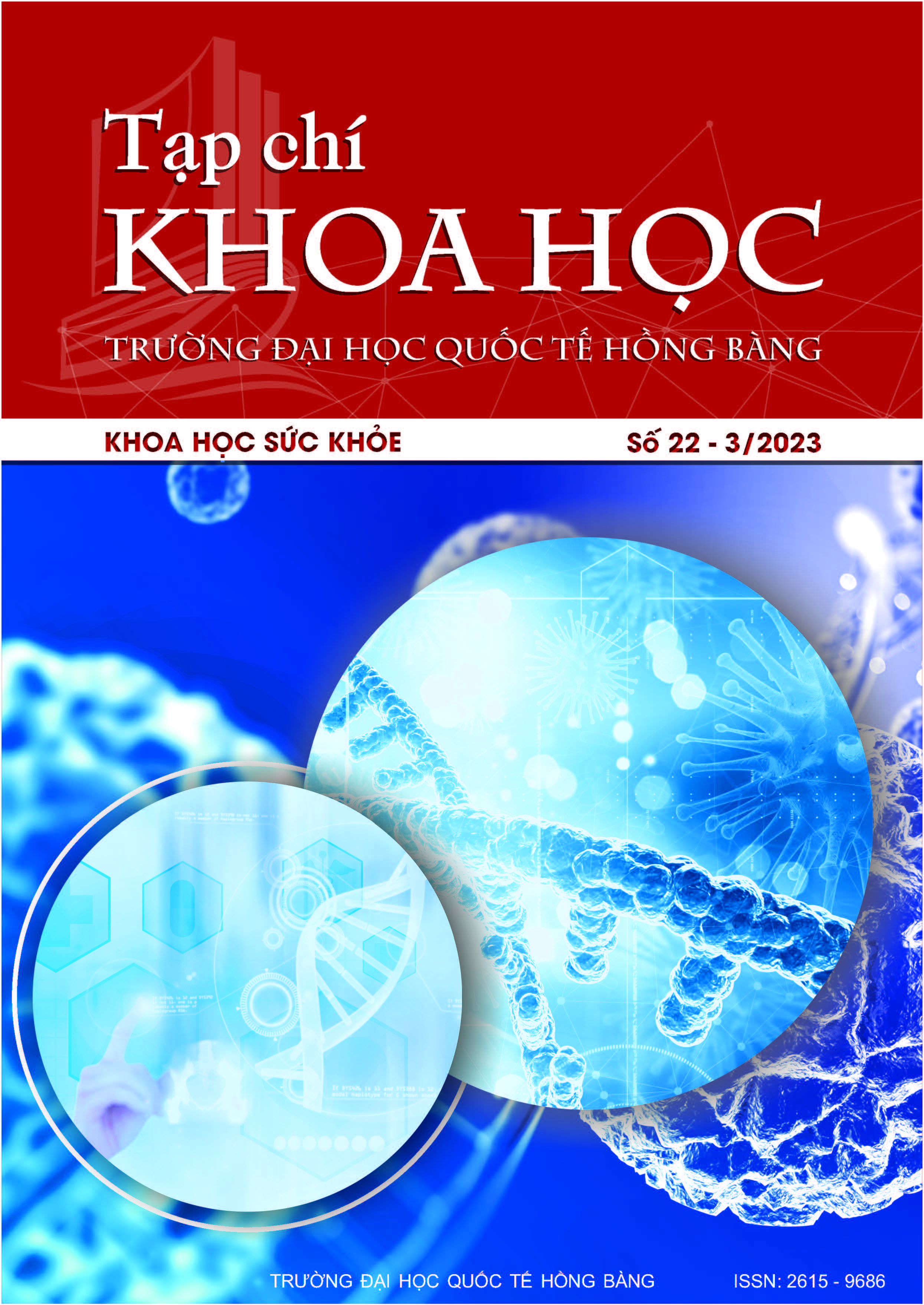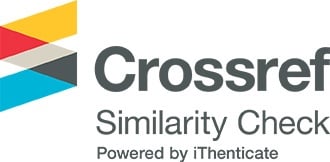Đánh giá vận động môi lưỡi qua tốc độ phát âm
Các tác giả
DOI: https://doi.org/10.59294/HIUJS.22.2023.295Từ khóa:
lão nha, phát âm, vận động môi lưỡi, suy giảm chức năng răng miệng, già hóa dân sốTóm tắt
Đặt vấn đề: Xu hướng già hóa dân số đặt ra nhiều thách thức về chăm sóc sức khỏe cho người cao tuổi. Người càng lớn tuổi tốc độ và sự chính xác của môi lưỡi giảm dần ảnh hưởng đến chất lượng sống. Tuy nhiên, hiện tại ở Việt Nam chưa có nghiên cứu nào ghi nhận vấn đề này. Vì vậy, nghiên cứu này nhằm khảo sát sự vận động môi lưỡi ở người Việt Nam với mục tiêu xác định tốc độ vận động môi lưỡi bằng test phát âm và xác định tỷ lệ phần trăm và nhóm tuổi giảm vận động môi lưỡi. Đối tượng và phương pháp nghiên cứu: Các bệnh nhân và sinh viên đến khám tại phòng khám HIU Clinic từ tháng 10/2021 đến tháng 10/2022. Người tham gia được yêu cầu thực hiện bảng hỏi và test phát âm lặp lại âm tiết /pa/ càng nhanh càng tốt trong 5s. Tương tự đối với các âm tiết /ta/ và /ka/. Số lần phát âm/ giây được ghi nhận và phân tích giữa các nhóm tuổi. Kết quả và kết luận: Tốc độ trung bình của các nhóm tuổi của âm /pa/, /ta/, /ka/ lần lượt là 6.5 ± 0.9, 6.5 ± 0.9 và 6.3 ± 0.5 lần/giây. Tốc độ trung bình giảm dần khi lớn tuổi (p < 0.001). Tỷ lệ giảm vận động môi lưỡi trong mẫu là 3.9%. Nhóm tuổi chủ yếu có suy giảm là trên 60 tuổi.
Abstract
Background: The trend of aging population raised various health care challenges for the elderly. Ageing accompanied with the decrease of tongue and lip motor function, which affects the quality of life. However, there is no study focusing this issue in Vietnam recently. Therefore, this study investigated the tongue and lip motor function in Vietnamese people with the aim of determining the speed of oral diadochokinesis and determining the percentage and age group of participants with decrease of tongue and lip motor function. Materials and Methods: Patients and students visited HIU Clinic from October 2021 to October 2022 were collected. Participants were asked to complete a questionnaire and oral diadochokinesis was assessed as the number of repetitions for the monosyllables /pa/, /ta/ and /ka/. The number of repetitions/second was recorded and compared among age groups. Results and conclusions: The average oral diadochokinesis rate of monosyllables /pa/, /ta/, /ka/ was 6.5 ± 0.9, 6.5 ± 0.9, and 6.3 ± 0.5 times/second, respectively. The average oral diadochokinesis rate gradually decreased with age (p < 0.001). The rate of reduced tongue and lip motor function was 3.9% and was highest in the age of over 60 years old.
Tài liệu tham khảo
[1] Tổ chức Y tế Thế giới, "Già hóa và sức khỏe ở Việt Nam và khu vực Tây Thái Bình Dương hệ quả chính sách và ưu tiên hành động," tại Hội thảo chính sách Y tế cho người cao tuổi, Vĩnh Phúc, 2015.
[2] Bệnh viện Lão khoa Trung Ương, "Già hóa dân số - Những thách thức đối với công tác chăm sóc sức khỏe người cao tuổi," tại Hội thảo chính sách Y tế cho người cao tuổi, Vĩnh Phúc, 2015.
[3] Minakuchi S et al., "Oral hypofunction in the older population: Position paper of the Japanese Society of Gerodontology in 2016," Gerodontology, vol. 35, pp. 317-324, 2018.
[4] Kugimiya Y. et al., "Rate of oral frailty and oral hypofunction in rural community-dwelling older Japanese individuals," Gerodontology, vol. 37, no. 4, pp. 342-352, 2020.
[5] Ito K. et al., "A Comparison of Methods for the Measurement of Oral Diadochokinesis," 老年歯科医学, pp. 48-54, 06/08 2010.
[6] Watanabe Y. et al., "Relationship Between Frailty and Oral Function in Community-Dwelling Elderly Adults," Journal of the American Geriatrics Society, vol. 65, no. 1, pp. 66-76, 2017.
[7] Hara K. et al., "Association between tongue muscle strength and masticatory muscle strength," Journal of Oral Rehabilitation, vol. 46, no. 2, pp. 134-139, 2019.
[8] Nakamura J. et al., "Impact of polypharmacy on oral health status in elderly patients admitted to the recovery and rehabilitation ward," (in eng), Geriatr Gerontol Int, vol. 21, no. 1, pp. 66-70, Jan 2021.
[9] Trần VT, Lâm NA, and Trịnh ĐH, "Điều tra sức khỏe răng miệng toàn quốc," pp. 12-18, 2002.
[10] Phan V.N., "Tình trạng sức khỏe răng miệng của người cao tuổi tại Thành phố Huế," Tạp chí Y học thực hành, vol. 568, no. 1, p. 1, 2007.
[11] Mousavi S., Mehri A., Nabavi D., Faraji M., and Maroufizadeh S., "Comparing the Diadochokinetic Rate in Farsi-Speaking Young and Older Adults," Iranian Rehabilitation Journal, vol. 18, pp. 57-64, 03/30 2020.
[12] Schimmel M., Domioni T., Bukvic H., Arakawa I., Seifert E., and Abou-Ayash S., "Oral diadochokinesis and associated oro-facial function in young and old German mother-tongue speakers: A cross-sectional study," (in eng), Gerodontology, vol. 39, no. 1, pp. 33-40, Mar 2022.
[13] Costa D.R., Totta T., Alves da Silva-Arone M.M., Ghedini Brasolotto A., and G. Berretin-Felix, "Oral diadochokinesis and masticatory function in healthy elderly," (in Inglés), Audiology - Communication Research, vol. 20, no. 3, pp. 191-197, 2015.
[14] Takeuchi N., Sawada N., Ekuni D., and Morita M., "Oral Factors as Predictors of Frailty in Community-Dwelling Older People: A Prospective Cohort Study," International Journal of Environmental Research and Public Health, vol. 19, no. 3, p. 1145, 2022.
[15] Kugimiya Y. et al., "Relationship between Oral Hypofunction and Sarcopenia in Community-Dwelling Older Adults: The Otassha Study," (in eng), Int J Environ Res Public Health, vol. 18, no. 12, Jun 21 2021.
Tải xuống
Tải xuống: 121











